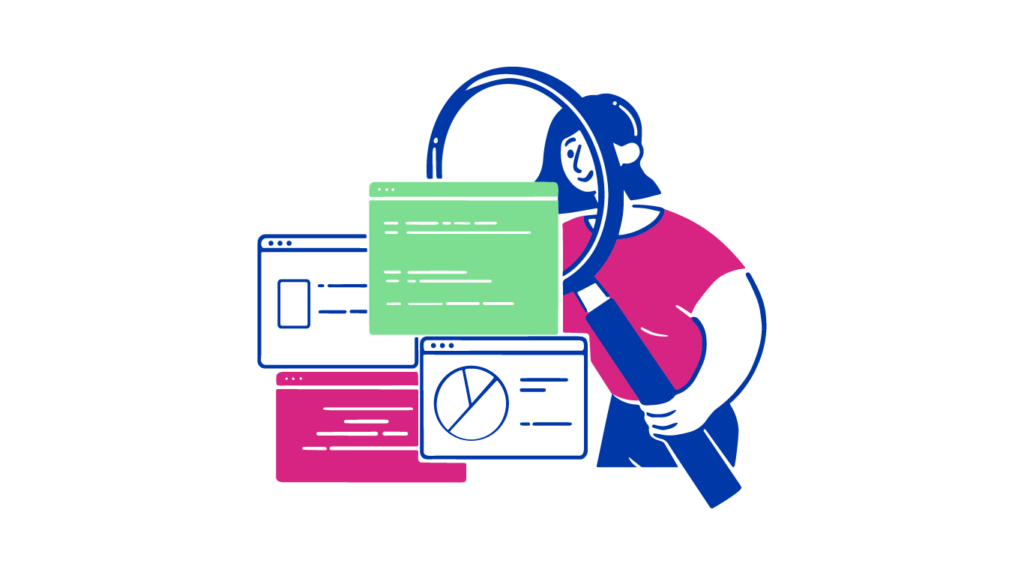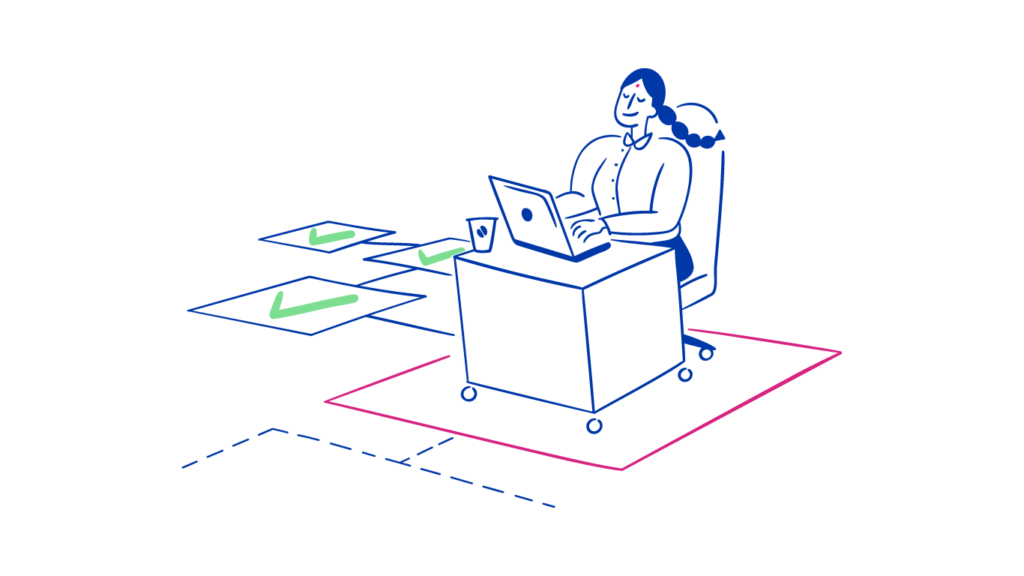9 Modern Sales Forecasting Techniques (With Examples)

There are many different types of business and, therefore, there are multiple ways to forecast sales. Unfortunately, there is no ‘one size fits all’ approach to forecasting and you need to understand which technique works best for your organisation. This is why we have created this list of sales forecasting techniques + examples to help guide you to the one that best fits your business.
In the words of sales expert Gary King, “Many sales managers struggle to create reliable sales forecasts. In fact, many forecasts are wildly inaccurate… the trouble is gut feel just won’t cut it. Nor will simply applying a top-down win rate to all opportunities. Instead, what’s needed is a sales forecast that is robust and can stand up to scrutiny.”
Keep reading to find a robust sales forecasting technique for your business.

Why is sales forecasting important?
There are many reasons why sales forecasting is essential for businesses. Here are some of the most important ones:
- It gives the business confidence going forwards to expand, increasing headcount, creating more marketing campaigns and investing in new technology that can fuel growth. Having concrete sales predictions allows companies to budget accordingly for these endeavours.
- Accurate forecasting can also act as an indicator of whether you are increasing shareholder value.
- Understanding your future revenue allows you to assess the health of the business and adjust your strategy accordingly. If the forecast is below expectations, you can correct the course before any issues become engrained.
- Knowing how much you expect to sell during a certain period of time helps you to make business decisions such as when to increase inventory or bring in temporary workers to help deal with a rush.
The Miller Heinman Group found that sales teams who make use of a formal, structured sales forecasting process can increase their win rates by up to a quarter, compared with those who opt for an informal approach.
The 9 sales forecasting methods to try
Straight-line method
Also known as the historical growth rate method, this tool for forecasting sales bases future revenue on previous sales, whilst also taking into account your average rate of growth over time.
Of course, the straight-line method doesn’t take into account any external factors that can affect sales, including seasonality, economic conditions and unforeseen circumstances. However, as a simple, easy to calculate method, it gives businesses a rough idea of what to expect.
Moving average
Stock market analysts often use the moving average technique to try and predict where the market is moving, and it is also used for sales forecasting. It involves breaking down data into subsets to gain a better understanding of the real trends.
For example, if you have a year’s worth of monthly sales data, rather than getting too excited about outlying good months or despairing about outlying bad months, you can find the mean of months one to three, then two to four, then three to five and so on. This smooths the results and helps you gain a better insight into the trends of your business.
Regression method
The regression method is a way of working out what effect various factors might have on your sales performance in the future. You can run this method in order to predict whether it would be beneficial to employ more sales staff, make more cold calls or add any other strategy into your arsenal.
Essentially, you take the sales performance metric you are interested in, known as the dependent variable, which could be the number of closed deals. This is Y.
Then you look at the independent variable, which is the action, the effect of which you are interested in finding out about. This might be the number of staff on the sales team. This is X.
You then plot these on a chart and find the trend. If you discover that more staff equals more closed deals, you can use forecasting software to accurately predict the increase in successful deals you can expect according to the regression method.
Delphi method
To complete the Delphi method of sales forecasting, you must have an unbiased facilitator who calls upon an anonymous panel of experts for their opinions, assumptions and estimates over future performance.
The facilitator asks questions of the panel, receives their answers and then dives deeper with another set of questions. The idea is to reach a consensus from the panel, who are able to give their honest opinion as their identity remains confidential throughout the process.
The Delphi method is also referred to as the estimate-talk-estimate technique (ETE).

Scenario writing
This method is used when future sales performance is difficult to predict due to uncertain external factors, such as a pandemic. Sales teams and sales managers have to be able to look at their sales cycles and processes in a subjective manner to make use of this method, as they are asked to plot out a number of different possibilities from the best-case scenario to the worst case, based on specific assumption sets.
This helps you plan for the unexpected and means that you are prepared for whatever happens. However, they are not scientific or specific. The scenario writing method simply gets your sales team thinking critically about future performance in all manner of situations.
Lead-driven forecasting
With lead-driven forecasting, you assign each lead in your sales pipeline a score based on the likelihood of being able to close it within the timeframe of your forecast. To achieve this, you need to have accurate historical sales data, as you make your assumption on a number of factors.
The value of the lead is based on your performance in the previous period, the performance of the same types of leads and those that came from the same source, including the conversion rate and sales value. Lead-driven forecasting relies on multiple data sources but does not take into account seasonality or external factors that could affect the future performance of leads.
Opportunity stage forecasting
To use opportunity stage forecasting, you need a good understanding of your sales pipeline. If you know the likelihood of deals being completed at each stage of the pipeline, you can forecast how many sales you are likely to make, based on where the customer is when you make your prediction.
Opportunity stage forecasting does not take into account the likely timeframe of the deal, just the chances of converting the lead based on where it currently sits in the pipeline. Usually, the further along the pipeline, the greater the probability of making a sale and you can check past sales data to inform your forecasting.
Length of sales cycle forecasting
Similar to opportunity stage forecasting, length of sales cycle forecasting allows you to predict how quickly a sale will be made, based on the average sales cycle length and how long each deal has been active.
For enhanced accuracy with length of sales cycle forecasting, you can work with the marketing team to look at the sales velocity of leads from different sources. For example, work out the average length of sales cycles gained by cold call leads, referrals, social media advertising and so on, and then apply these averages to estimate when your current leads in each of these categories will complete.
Intuitive Forecasting
For intuitive forecasting, the sales manager asks their sales team to estimate the outcome of their current leads. Sales reps are obviously closest to the deals so it makes sense to listen to them and find out how they feel a lead is progressing. With experience, sales professionals get a sense of whether someone will sign up.
However, the problem with intuitive forecasting is that it isn’t very scientific and sales reps tend to be optimistic about their prospects, meaning you may get a false-positive prediction of the outcome of their current deals.
Sales forecasting techniques examples
| Technique | Example |
| Straight-line method | If you have sales of €10,000 for one week, and actual sales are growing by 10%, the straight-line method would forecast sales for the next week of €11,000. |
| Moving average method | If you have ten weeks of data on closed deals, it might look like this: 101, 82, 128, 119, 102, 133, 118, 124, 131, 130. Finding your average number of sales a week from this gives you 116.8. But that doesn’t show you the trend. Similarly, just looking at the single-week figures can be distracting due to outlying performances. For a more meaningful trend analysis, you might opt to look for the three-week moving average. You start by finding the average of weeks one to three (103.6), then weeks two to four (109.6), then weeks three to five (116.3), and so on. From this, you can then use the trend to forecast future performance. |
| Lead-driven forecasting | When you look at your data for the previous period, you see that leads from social media advertising converted 35% of the time and the deal value averaged €1,000. From that, you can forecast that 35% of your current social media advertising leads will end in a sale and will be worth an average of €1,000. Complete this for each different source and you will be able to forecast the number of future sales and the expected revenue. |
How to Choose the Right Forecasting Technique
Each forecasting technique has its pros and cons and you may feel like you don’t want to rely on just one method to make your forecasts. You could mix up qualitative techniques, which rely on knowledge and judgement calls, and quantitative techniques, which use hard data in order to build up a fuller picture of your company’s future.
If you have a comprehensive set of historical sales data, you can use techniques such as the regression method, but that would not be useful to an organisation where reps are less used to updating the CRM, for example. If your records are not accurate, that will throw the forecast out and it will be of no use or, worse, damaging to the business.
The needs and resources of your organisation will dictate the kinds of sales techniques that you employ. In addition, you can test techniques by running them in dummy form to see how well they would have predicted your most recent actual sales figures, for example. This will help you discard those that simply don’t work for your business and help you find which are of the most use.
FAQ
How to have accurate sales forecasts?
There are two main factors behind accurate sales forecasting. Firstly, your sales data needs to be comprehensive and accurate. Secondly, your forecasting technique must be reliable. This means that you need to test your techniques before you use them and then monitor their performance over time to ensure they are of benefit to your business.
Why is quantitative forecasting important?
Quantitative forecasting utilises your data, which means that you can be sure your forecasts are based on real-life situations. Qualitative forecasting is based on intuition but that can be clouded by emotion and excess optimism or pessimism. Backing up your forecasts with facts is important and that is where quantitative methods come into their own.
Should you do a bottom-up sales forecast or a top-down sales forecast?
Whether you opt for bottom-up or bottom-down sales forecasts depends on your requirements and preferences. The advantage of a bottom-up approach is that it starts by projecting the smallest components of the company’s sales process in order to make the forecast, so it is easy to adjust if there is a change in the number of sales personnel, for example. A top-down forecast looks at the size of the market and estimates the share for the organisation.
Using both methods makes sense, as you can use one to verify the other before you lock into the forecast that you make.
Conclusion
These sales forecasting techniques and examples show you the many varied approaches that there are to forecasting sales and should help you decide which is right for you. Every different organisation has different needs and resources, and they will dictate your choice for forecasting future sales. The resources you have at your disposal will also play a part in making that decision. If you want more help with improving your sales performance, check out fullInfo’s tool which helps you find the right contacts and generate leads more easily.
References and Further Reading
- The 8 Key Steps Involved In Sales Forecasting
- Definition of forecasting
- Forecasting at Shopify
- The Essential Sales Team Performance Metrics To Track
- How to Handle Warm Leads Vs Cold Leads as a B2B Sales Rep
- [Ultimate Guide] How To Monitor The Performance Of Sales Staff
- Sales forecast template
- Advanced technology and AI for forecasting
- How To Build A Lead List That Brings Results